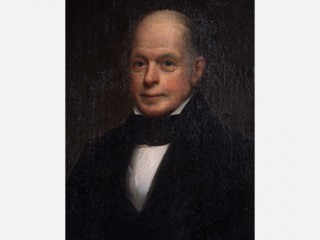
Asher Benjamin biography
Date of birth : 0177-06-15
Date of death : 1845-07-26
Birthplace : Hartland, Connecticut
Nationality : American
Category : Famous Figures
Last modified : 2010-12-27
Credited as : Architect, Roman architect of the Augustan Age,
Asher Benjamin, an American architect, educated two, and possibly three, generations of 19th-century architects through his writings.
Asher Benjamin's importance to the architectural profession can be understood only in relation to late-18th-and early-19th-century trends. All architectural thought from the 14th to the mid-18th century was dominated by the writings of the Roman architect of the Augustan Age, Vitruvius. Sir Christopher Wren (1631-1723), his follower James Gibbs (1683-1754), and the 18th-century "Palladians," including Colen Campbell, were the last of the major English Vitruvians. Gibbs and Campbell published architectural books from which lesser-known architects copied, and these books were imported to the United States. Benjamin adapted many of the designs to American use; he changed the stone details of expensive, monumental English buildings to constructions in wood to fit the scale and finances of the New England communities. Benjamin stated in his The American Builder's Companion (1806) that two-thirds of the contents of English architectural publications were unsuitable for the American craftsmanbuilder.
The Vitruvius-Palladio-Wren-Gibbs tradition in Europe was on the wane by 1750, but its "colonial" adaptations by Benjamin lasted almost until the Civil War. Benjamin also introduced some of the new ideals of post-1750 European architecture: a freedom from Vitruvian ideals, epitomized by the romantic movement and, in the realm of classical architecture, by romantic classicism (neoclassicism). In The American Builder's Companion Benjamin admitted that many "old fashioned workmen" would follow in "the footsteps of Palladio" but that "reform in some parts of the system of architecture is loudly demanded…."
Benjamin published seven works on architecture that were issued in a total of 45 editions. Many of his designs borrowed the Adam "Federal" style from Charles Bulfinch, but by the fifth edition (1826) of The American Builder's Companion Benjamin was introducing Greek revival detailing. He even seems to have opened a "school" of architecture in Boston; however, it was through his publications that Benjamin's fame spread. Numerous buildings in Chicago prior to the 1871 fire had a Benjaminesque flavor.
Benjamin's most noted designs are the West Church Meeting House (1806) and the First Church (1808), both in Boston; the Meeting House in Northampton, Mass. (1810); and the Rhode Island Union Bank in Newport (1817). He also built houses in Massachusetts and Vermont. Many churches and homes in New England attributed to Benjamin were constructed by carpenter-builders from designs in his books. The Congregational Church in Bennington, Vt. (1804-1808), for example, which has been attributed to Benjamin, was designed by Lavius Fillmore.
For general background and specific material on Benjamin see Talbot Hamlin, Greek Revival Architecture in America (1944), and Edmund W. Sinnott, Meetinghouse and Church in Early New England (1963). See also Benjamin's The American Builder's Companion (1806; 6th ed. 1827; repr. 1969).
















